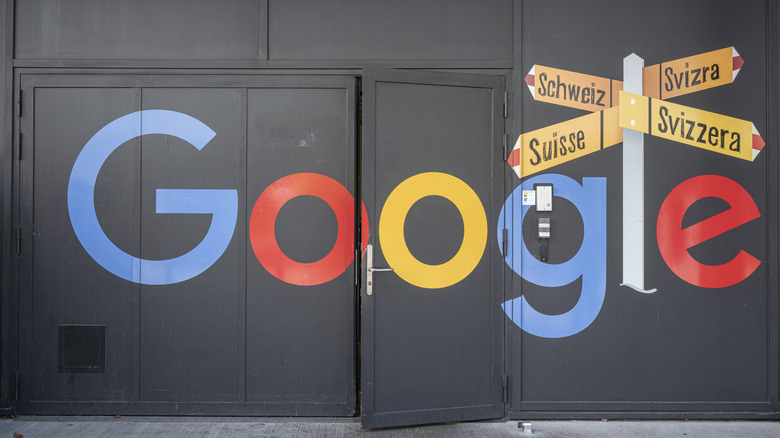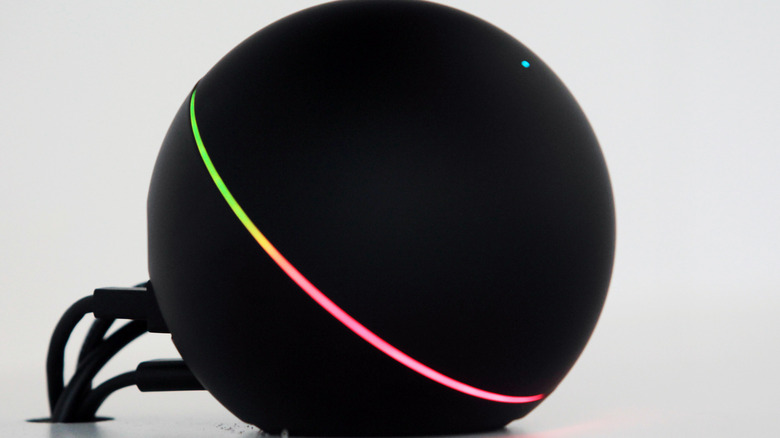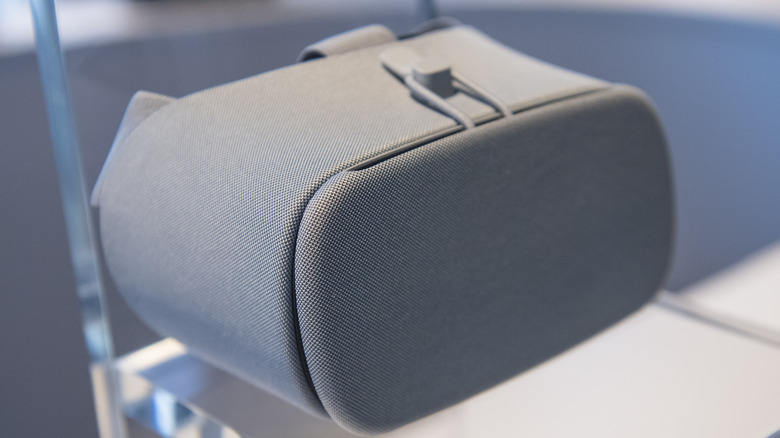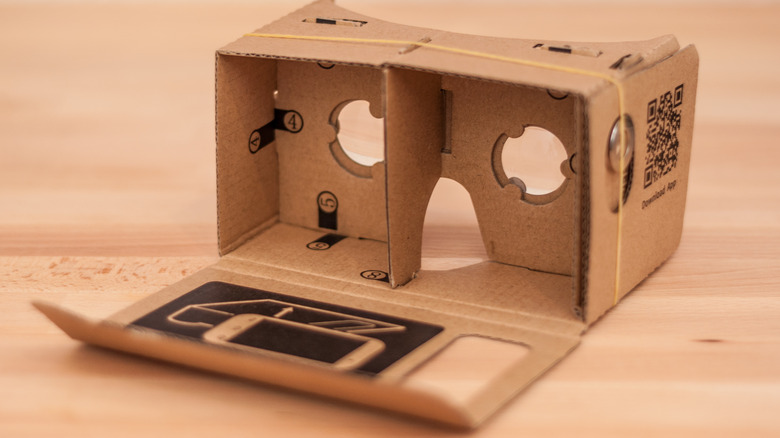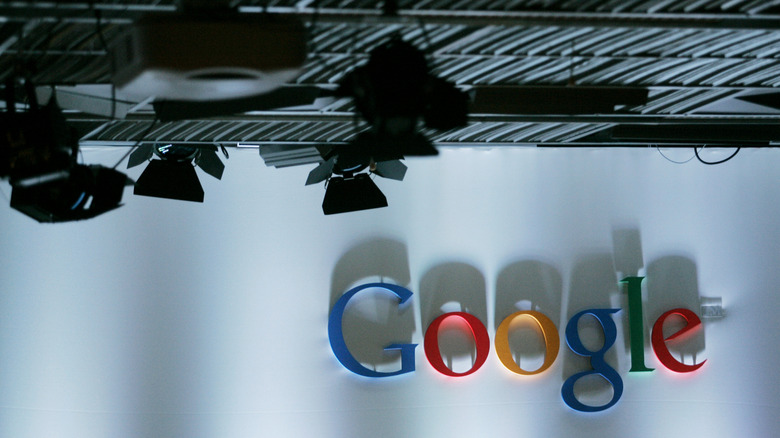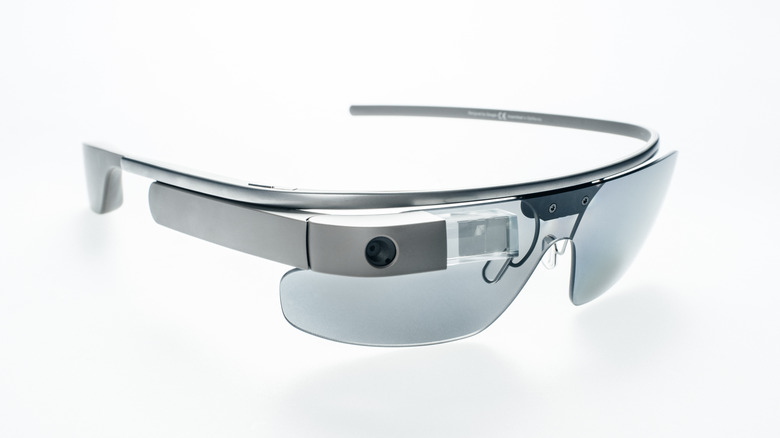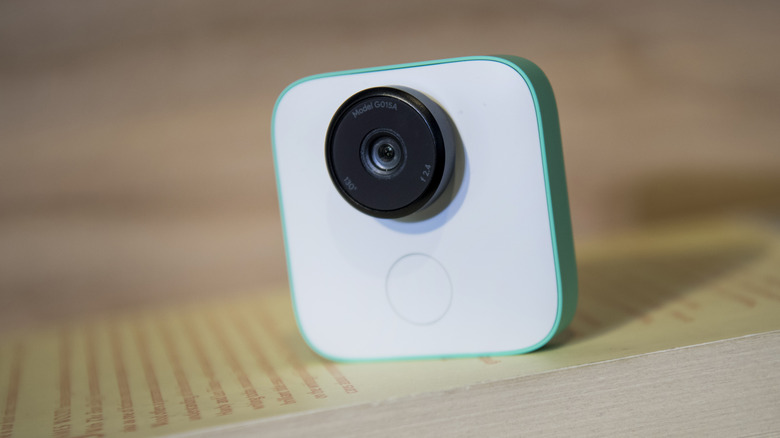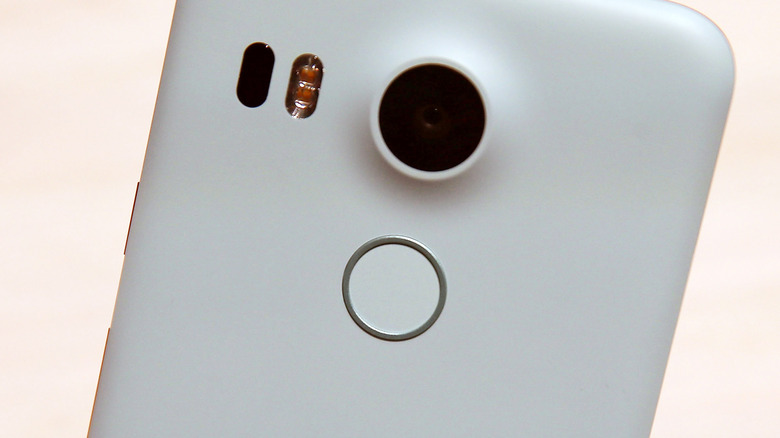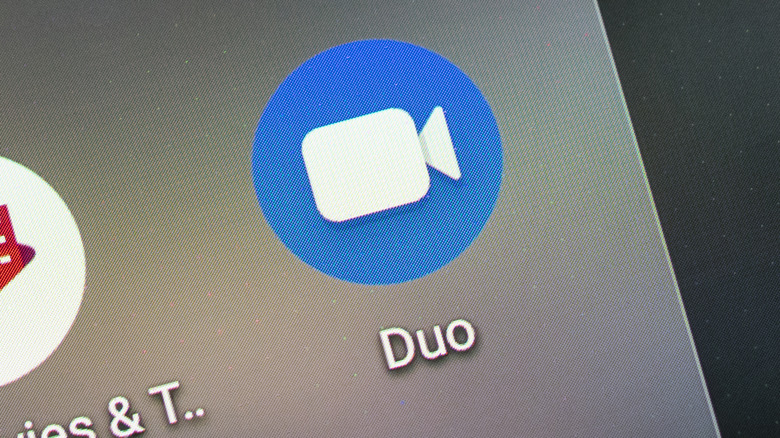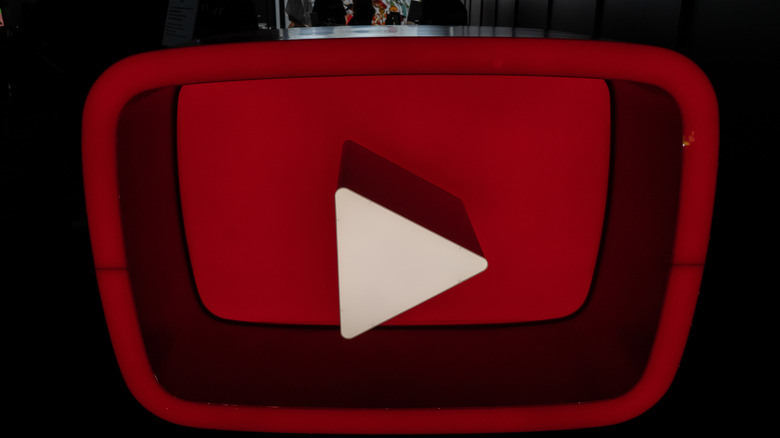Remember These? 10 Forgotten Google Products That Faded Into Obscurity
This past month, Google turned 25 years old. In the 25 years that Google has existed, the company has revolutionized the act of searching for information online. For better or for worse, Google is the premier search engine. But that's not all the company has to offer.
Of course, there are the more obvious and successful offerings Google has, such as Google Drive and the suite of tools that come with it, YouTube, Blogger, and more. In the world of smartphones, Google makes Android on the software end and Google Pixel phones on the hardware end. There's also Google's Nest smart speakers for setting up a smart home through the use of Google Assistant. The point is that Google is a wildly successful company with many accomplishments. But that doesn't mean everything they make is gold.
Every successful company has its fair share of misfires and blunders, and Google is no different. There are plenty of forgotten Google products that have come along over the company's 25 years. While some of the forgotten Google products of the past are better left forgotten, some are thought-provoking "what if?" candidates. Some are forgettable enough that it's hard to remember them even existing, despite having been out of commission for less than a full year. For Google's 25th year, it's worth looking back on its past products that have faded into obscurity.
In 2011, with Facebook in the midst of explosive growth, Google threw its hat into the social media ring. Unfortunately for Google, Google+ was a complete flop. There are a number of factors that explain why Google's Facebook killer failed as spectacularly as it did, but the largest factor was it being plain boring. At launch, Google+ didn't really have anything that Facebook wasn't already offering.
When you combine a fairly boring platform with inconsistent branding, unimplemented feedback, poor security, and pushy recruitment, the platform seemed almost bound for failure. The pushy recruitment seems especially bizarre in hindsight. For a long time, new Gmail accounts were forcibly bundled with a Google+ account. Perhaps worse than that was the way Google tried to push Google+ through YouTube, which included the forced integration of Google+ with YouTube's comment section. That particular change caused a massive headache for creators on the platform, which resulted in YouTube adding a comments page to make sifting through the Google+-enabled comments less of a headache.
Despite trying again with revamped Google+ updates, it simply never worked. By 2015, just four years after launch, less than 10% of Google+ accounts were active. Ultimately, in 2019, Google made the long-anticipated announcement that Google+ was dead. Even Google+'s shutdown didn't go as planned, as a bug pushed the platform's shutdown forward by four months. While not the strangest thing Google has ever tried, Google+ is certainly one of the more prolonged flops the company has ever produced.
Google Nexus Q
The Google Nexus Q is perhaps the most colossal flop Google has ever produced, though it's easy to see what Google was going for. The device was unveiled at the 2012 Google I/O Developers Conference and was given freely to all attendees. Simplest put, the Nexus Q was Google's answer (at the time) to the Roku and Apple TV. Unfortunately, where those devices functioned through a wide reach to various services a consumer might use, Nexus Q only worked with Google services and had to be controlled through the Nexus Q app on a Google Nexus phone. Unsurprisingly, the Google Nexus Q was a huge flop.
There are some positives to the Nexus Q, mainly the look. The spherical device looks sleek, reminiscent of the Amazon Echo Dot of today while pre-dating it by a number of years. The hardware inside wasn't bad either, and was capable of some great output. Unfortunately, the device's undoing comes back to the lack of software.
There was also confusion as to what Nexus Q actually was and did. The bizarre reveal video for the Nexus Q wastes no time in pointing out that most people don't know what it is when they look at it, before immediately calling it a "living alien object." Less than a month after the announcement of the Nexus Q, Google indefinitely delayed the device's consumer launch. That indefinite launch never came, and Google's Nexus Q died just as quickly as it was born.
Google Daydream
For a time in the mid-to-late 2010s, virtual reality headsets that centered around your phone were all the rage. There were devices like Samsung's Gear VR but Google, naturally, had a contender as well. The more premium of Google's phone-based VR headsets was the Google Daydream View. Like the other products on this list, the Google Daydream was a failure.
The device was simple enough to use — you just put your device in the headset to view the curated VR experience Google had created. Unfortunately, it never gained the kind of traction needed to move forward as a premier device. Launching in 2016, the Google Daydream View was in the unfortunate position of being right on the cusp of more souped-up VR headsets like the HTC Vive and Oculus Go. Another issue with the headset was that it required you to more or less give up your phone to use the headset for very long.
The device did have its upside. It had a premium look and feel, and the controls were pretty natural compared to other offerings. In a step away from the great mistake of the Nexus Q, Daydream also launched with great software support and promised future software as well. However, those positives weren't enough to stand up to the shifting tides of VR's future, and ultimately, the Daydream View was officially discontinued in 2019. The death of the Daydream was made more official with the VR Play Store being shut down in 2021.
Google Cardboard
If Google Daydream was Google's premium foray into the world of smartphone-based VR headsets, then Google Cardboard represented Google's more democratized approach. Google Cardboard is the cheaper, older sibling of the Google Daydream, having launched in 2014. Google Cardboard was never meant to be on par with other headsets, but rather, it was meant to be a much cheaper, alternative way to get a feel for the world of VR.
While the Google Cardboard wasn't a premium VR experience, there was a wide range of apps available on the Google Play Store that supported the use of Google Cardboard. Unlike other products on this list, Google Cardboard isn't exactly dead. You can still get your hands on a third-party cardboard viewer, and you can still download apps that will work with it. You just can't buy one from Google, as they ceased sales of the Google Cardboard in 2021. Shortly before this change, Google made Google Cardboard an open-source project. Development continues for apps that are compatible with various cardboard viewers.
It makes sense that Google would themselves stop making its Cardboard VR offering after shuttering its more premium Daydream VR. Additionally, by the time Google Cardboard was passed off by Google, democratized cardboard VR had received an interesting new addition in the form of Nintendo's Labo VR Kit. While certainly not a competitor to Google Cardboard, the Labo VR Kit is an interesting view into how much further cardboard VR can go.
Google Lively
Google Lively was a virtual world and social networking platform launched by Google in July 2008. It aimed to provide users with an online environment where they could create avatars, interact with others, customize virtual spaces, and engage in activities such as chatting, gaming, and exploring virtual worlds. Lively could be embedded into HTML pages, allowing it to act as an alternative lens to view internet forums. While it generated excitement and curiosity upon release, Google Lively ultimately failed to gain traction, and was shut down a few months after its launch.
The reasons behind the failure of Google Lively come down to a few key issues. One of the biggest was its perceived status as a Second Life clone. Second Life is a very similar virtual-world game, and its large presence in the market made it hard for Google's competitor to break in. Of course, to break into said market, there would have to be something interesting to hook users into Lively over Second Life, and that hook just didn't exist. There didn't seem to be any objective in mind for Lively, and it wasn't even supported on Google's own Chrome browser.
The game was also a mess from a technical standpoint, with a disliked user interface. After the Summer 2008 launch of Google Lively, user numbers saw a growth that quickly fell off and remained stagnant. Less than a year after launch, at the end of 2008, Google Lively was discontinued and permanently shut down.
Google Glass
Wearable technology has become popular since the boom of smartwatches that coincided with the launch of the Apple Watch in 2015. However, this wasn't the first attempt at making wearable technology. In 2012, Google unveiled Google Glass. It promised to revolutionize personal computing by providing users with a hands-free, augmented reality experience through a pair of smart glasses that came equipped with speakers, Wi-Fi connectivity, a camera, and more. The wearable revolution was here, and Google was leading it. Obviously, that didn't happen.
The story of Google Glass' failure is a classic tale of jumping the gun. Engineers working on the Google Glass were of the mind that there was a lot of work to be done to make the model ready for launch, but there were other plans higher up in the company. Despite the caution of the engineering team, Google proceeded with a $1,500 launch that ended in mostly negative reviews.
One of the biggest obstacles Google Glass encountered were privacy concerns and device etiquette. The device's ability to record videos and pictures discreetly raised concerns about potential invasions of privacy, leading to bans in various establishments. Google Glass also struggled to establish clear and compelling use cases beyond taking pictures and recording videos. Perhaps the most damning issue the device faced was just looking goofy. When combined with the stigma that came with the device and the risk of being labeled a "glasshole," there was plenty of incentive not to own or wear them.
Google Clips
Ever see something interesting or beautiful, and just miss your opportunity to pull out your phone? The Google Clips was made with that exact issue in mind. Google Clips was a compact, AI-powered camera introduced by Google in October 2017. Marketed as a hands-free way to capture candid moments and memories, Google Clips was designed to automatically capture photos and short video clips of people and pets using artificial intelligence.
One of the major issues Google Clips faced came from the presence of the camera itself. In order to capture candid, spontaneous moments, you would need to be wearing the camera or carrying it around all the time. While that's not the worst thing ever given its size, there's a level of discomfort that's hard to deny with having a camera pointed at everything you're doing at all times. Especially when interacting with other people out in the world.
Of course, even if you could tolerate the Google Clips and wear it around at all times, the experience is reliant on the AI capturing truly interesting moments throughout your day. Unfortunately, the Google Clips just didn't live up to that ideal, as the camera would often capture clips that just weren't all that interesting. With both of those issues in mind, alongside the initial $249 price point, the Google Clips was never able to get off the ground in a meaningful way. In October 2019, Google Clips was discontinued, just two years after its launch.
Google Nexus Phone
In the smartphone world, Google is known for their Google Pixel phones; they recently introduced the Google Pixel Fold. However, before the first Google Pixel's launch in 2016, there was still a line of Google phones. The Google Nexus was an Android smartphone developed in collaboration with various manufacturers, including HTC, Samsung, LG, and Huawei. These devices aimed to showcase the pure Android experience and receive timely software updates directly from Google. Despite a dedicated fanbase and positive reviews, the Nexus line eventually gave way to the Pixel.
The lineup began in 2009 with the introduction of the Google Nexus One. Manufactured by HTC, it was intended to be Google's opening answer to the iPhone, but a lack of carrier support hindered the sales of the phone. The Nexus 6P, built by Huawei, would be the final Nexus phone offering before the launch of the Google Pixel. Not every phone in the Nexus line had availability issues; the Galaxy Nexus, made by Samsung, was sold directly by Verizon.
The Nexus wasn't the only Google smartphone available before the Pixel. Both the HTC One and the Samsung Galaxy S4 received a "Google Edition." The "Google Edition" was an unlocked version of the phone that came with stock Android, sold directly by Google. There were fears that Google was stopping the Nexus in favor of the "Google Editions," but the end of the line was still a few years off.
Google Duo
Google Duo was, in its time, becoming something of an Android answer to FaceTime. It was designed to provide a simple and high-quality video calling experience for both Android and iOS users. Although it initially may have seemed an unnecessary, additional app for getting in touch, it eventually gained the ability to let users call Android contacts that didn't have the app. Duo, in itself, was poised to become a complete replacement for the normal calling app on an Android device that could enable video calls in much the same way as FaceTime did for Apple.
Alas, Google had other plans for Duo. In the midst of the COVID-19 pandemic, with Zoom on the rise as a dominant force in the video calling space, Google planned to merge Google Meet and Duo. However, by the end of 2021, it was reported that the plan had fizzled out on Google's end. That reversal was itself reversed in the summer of 2022, when Google committed to a merger of Google Meet and Google Duo. Through the confusing plan to merge Duo and Meet, which first saw Duo gain all of Meet's features without either service ending, Duo was quietly shuttered in favor of Google Meet.
YouTube Reels and YouTube Annotations
YouTube has spent the vast majority of its existence owned by Google. This October will mark the 17th anniversary of Google's 2006 purchase of YouTube. In YouTube's long history, there have been many positive features introduced, and some that simply didn't stand the test of time. Two prominent examples of axed YouTube features are YouTube Stories (originally known as YouTube Reels) and video annotations.
It's easy to forget that YouTube had stories. Many social media apps have tried to add stories, and YouTube isn't the first to admit defeat. (X, formerly known as Twitter, dropped "Fleets" a little less than a year after their introduction.) YouTube's stories were axed in favor of better tools for the Community Posts feature, as well as more focus on YouTube Shorts, a format that makes much more sense for YouTube to dip into anyhow.
A more time-weathered feature dropped by YouTube is video annotations. The annotations were clunky-looking text boxes that could be added to a video after it was posted. The annotations themselves could be made in multiple colors, and different shapes as well. You could flick them off, or close individual annotations as well. More creative YouTubers would create full graphics to click in their video that were powered by clicking annotations overlaid on the graphic. The feature was never brought to mobile, and that's the exact reason support for creating them was discontinued in 2017. More drastically, in 2019, YouTube wiped out all pre-existing annotations.
